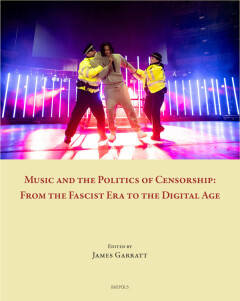
- Afhalen na 1 uur in een winkel met voorraad
- Gratis thuislevering in België vanaf € 30
- Ruim aanbod met 7 miljoen producten
- Afhalen na 1 uur in een winkel met voorraad
- Gratis thuislevering in België vanaf € 30
- Ruim aanbod met 7 miljoen producten
Zoeken
Music and the Politics of Censorship
From the Fascist Era to the Digital Age
James Garratt
Hardcover | Engels
€ 148,40
+ 296 punten
Omschrijving
In relation to music, the word censorship immediately calls to mind the totalitarian regimes of the twentieth century, in particular those of Nazi Germany and the USSR. But music censorship is arguably even more prominent and pervasive in our own age, not only in authoritarian states but also in Western liberal democracies. This book aims to enhance our understanding of censorship practices, the social and political values they serve, and the governmental and legal frameworks that have enabled them to flourish. Its twenty chapters - written by a team of international scholars - explore both historical case studies and the new forms of censorship that have emerged in the digital age. It evaluates different theories and models for understanding censorship, applying the concept not only to top-down government controls but also to the measures that cultural institutions, the media, and global corporations have put in place to police music and musicians. Crucial too is the exploration of how music censorship relates to other forms of political action, including cancelling, critique, and performative activism. The book also reveals the diverse strategies that musicians and listeners have employed to circumvent censorial control and to march to a different beat.
Specificaties
Betrokkenen
- Auteur(s):
- Uitgeverij:
Inhoud
- Aantal bladzijden:
- 480
- Taal:
- Engels
Eigenschappen
- Productcode (EAN):
- 9782503618463
- Verschijningsdatum:
- 7/08/2025
- Uitvoering:
- Hardcover
- Formaat:
- Genaaid
- Gewicht:
- 1242 g

Alleen bij Standaard Boekhandel
+ 296 punten op je klantenkaart van Standaard Boekhandel
Beoordelingen
We publiceren alleen reviews die voldoen aan de voorwaarden voor reviews. Bekijk onze voorwaarden voor reviews.








